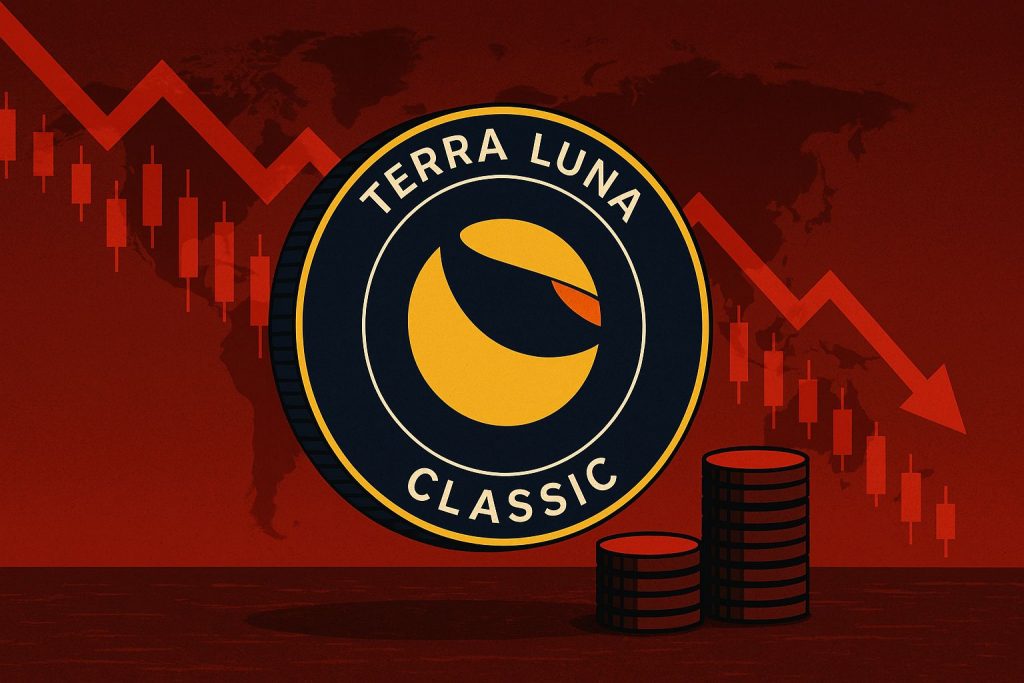
Table of Contents
ToggleTerra Luna is undoubtedly one of the most well-known projects in the crypto ecosystem. Many know it for its great utility, and others, perhaps, for its controversial history. Terra Luna was founded in 2018 by Daniel Shin and Do Kwon. Their goal was to create a digital economy based on stablecoins and smart contracts.
The project was a complete success thanks to its dual-token system: LUNA, which acted as collateral, and TerraUSD, an algorithmic stablecoin. However, this system was the cause of the project’s decline. In May 2022, the ecosystem suffered a collapse because UST lost its peg to the dollar, leading to hyperinflation of LUNA. The collapse was so significant that the only solution was the creation of Terra 2.0, while the original chain was renamed Terra Classic.
Today, Luna Classic continues to operate in the crypto ecosystem. After the collapse, improvements in governance and security have been implemented to prevent a second crash. The project stands out for allowing instant and cost-free crypto transfers, purchases, and swaps. At first glance, it has a lot to offer, but let’s see what exactly happened with the original project and what triggered this event.
Terraform Labs Creditors: The Crypto Loss Claims Portal is scheduled to open for submission of Crypto Loss Claims on March 31, 2025. Creditors may file Eligible Crypto Loss Claims at https://t.co/7YQvfQr76x. The deadline to file is April 30, 2025 at 11:59 p.m. (prevailing Eastern…
— Terra 🌍 Powered by LUNA 🌕 (@terra_money) March 28, 2025
What happened to Terra Luna?
As we mentioned earlier, in May 2022 the disaster took place… The algorithmic stablecoin UST completely lost its peg to the dollar and fell to lows of up to USD 0.30. The reaction was a massive sell-off that forced the burning of a large amount of LUNA to try to maintain the peg with the currency, but it was useless. The result was the hyperinflation of LUNA, plummeting more than 98% in less than 48 hours.
It goes without saying that this collapse produced massive losses for many users and investors. Confidence in the project was lost, and if there were still users holding their cryptocurrencies, they stopped doing so in the following days. At the same time, many investment funds were also affected. Among them, Three Arrows Capital and Celsius Network.

As you probably already know, whenever there is an event of this magnitude, the entire crypto market is affected, for better or worse. In this case, the result was totally negative. A widespread domino effect occurred, and the market capitalization of cryptocurrencies was significantly reduced.
Why did Terra Luna crash?
Many aspects led to the project’s collapse, but we can highlight some key ones. TerraUSD (UST) ‘s algorithm depended entirely on the burning and issuance of LUNA to maintain its peg to the dollar. The problem was that this design was not backed by real assets, making it unstable and vulnerable to any market change. Without tangible backing, the loss of confidence was almost automatic after the price destabilization.
The massive withdrawal of liquidity following fear and desperation triggered a mass sell-off. In fact, numerous exchanges opted to delist these assets, causing even more desperation. The community’s reaction to this sequence of events was nothing but panic and desperation. The only thing left was to accept the million-dollar losses.

Will Terra Luna Classic recover?
Recovering from a collapse like the one in May 2022 is not easy. However, new solutions have been implemented to address the weaknesses that led to the collapse. Among these solutions is the burning of LUNC tokens. Reducing the supply and increasing the demand is key to raising the value of the coin. Some exchanges have joined to support this system by burning large amounts of LUNC.
Another important aspect is improving the network infrastructure with enhancements such as integrating Luna Classic with the Cosmos ecosystem. This integration improves security, maintenance, and the network in general. Last but not least, a key factor is the support from both the community and the exchanges. After all, without trust, the project could not achieve anything.
Some experts, like Newton Gitonga from Invezz, believe that these initiatives could boost LUNC’s recovery. However, the community remains divided. Although there is clear support for votes and proposals, uncertainty and volatility remain obstacles.

For his part, Ethan Blackburn from Cryptsy highlights that interest in LUNC has increased due to Bitcoin (BTC)‘s recent boost. However, he emphasizes that LUNC’s recovery is still incomplete and depends, as we have said, on many factors.
Can Terra Luna Classic reach $1 again?
Currently, LUNC has a market capitalization of approximately $340 million and a circulating supply of 5.4 trillion tokens. To reach $1, the market capitalization would have to increase significantly. At first glance, this seems unlikely, at least in the short term.
For LUNC to reach $1, we would need a massive increase in demand and a very large reduction in supply. Additionally, network adoption and market confidence would have to improve. Although they have already improved compared to the collapse, they are not stable enough to reach that value in the short term.




